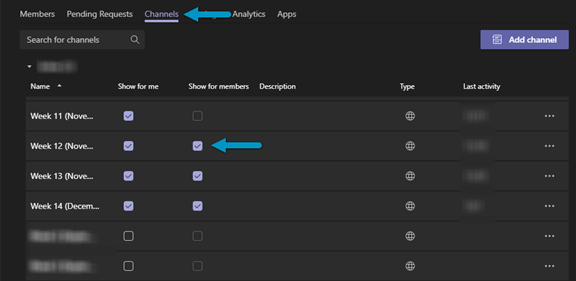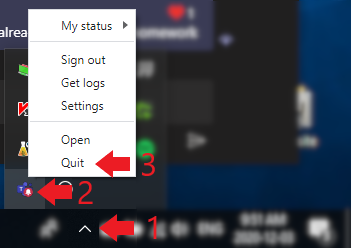Tips and Tricks to Improve Your Experience Teaching with Microsoft Teams
Microsoft Teams is a flexible teaching tool for distance learning. Profweb has already explored its potential as:
- a video-conferencing tool
- a central ecosystem for students to work in teams efficiently
- a place to share course material in a centralized and inclusive manner.
However, for all its merits, Microsoft Teams is far from being the most intuitive teaching tool there is. Some basic functionalities are disabled by default and hidden in intricate menus, while others behave in strange and unexpected ways. To help flatten Teams’ relatively steep learning curve, here are some simple tips and tricks to improve your experience teaching with Teams.
Improving your video conferencing experience
In July 2020, Teams received a massive update to its video conferencing functionalities that included the “new meeting experience”. This option makes it so your meetings open in a new window, which is great if you are using a dual-screen setup, and enables a variety of additional features, notably the “Large gallery mode”, which allows you to have more than 9 people on your screen at once.
To turn on the new meeting experience, click on your profile in the top right corner of your Teams window, and then on “Settings”. In the “General” tab, under “Application”, click on the checkbox next to “Turn on new meeting experience”. Once that is done, restart your Teams.
You should now have access to the new meeting options, which you will now find in the top right corner of your video conference window.
Use dark mode to avoid straining your eyes
After many hours of teaching, marking, and class management, Microsoft Team’s default sparkly white theme might become hard on the eyes, especially in low-light environments. Thankfully, Teams offers both a “Dark” and a “High Contrast” themes to reduce the stress on your eyes. To change the appearance of your Teams, click on your profile picture in the top right corner, then on “Settings”. There, at the top of the menu, you will be able to select the theme that works best for you.
Using channels to your advantage
1. Dividing your content
Channels are a great way to divide your teaching material. There are many valid approaches to dividing your material (creating 1 channel per unit or chapter, for example) but, personally, I find that creating 1 channel per week works best for me.
Dividing the content in this manner:
- limits the amount of material and conversations to search through in each channel
- allows teachers to group content and assignments simply and clearly
- acts as a secondary calendar
If you decide to create multiple channels for your class, it is important to know that channels will always appear in absolute alphanumerical order. What this means is that a channel named “Week 10”, for example, will appear above a channel named “Week 2”. A simple workaround for this issue is to add a “0” to your channels 1 through 9.
Additionally, sending your weekly assignments to their appropriate channel is a great way to complement this method of building your class on Teams. To do so, when you create your assignments, go under “Settings” and, beside “Post assignment notifications to this channel”, click on “Edit”, and select the correct week.
2. Managing your channels
Now, always having to navigate through 20+ channels might be overwhelming for your students. Fortunately, it is possible to manage what channels your students see, and which one are hidden.
To access those settings, from your team’s main screen, click on the ellipsis (…) next to your team’s name and click on “Manage team”. Then, select the “Channels” tab. There, you will find a list of all your channels, followed by 2 rows of checkboxes labeled “Show for me” and “Show for members” respectively. Checking the boxes under “Show for members” will guarantee that a channel is visible to your students. This way, you can decide, for example, to present 5 channels at a time (the current week’s, as well as the 2 previous weeks’ and the 2 next weeks’), which will make the channel list much easier for your students to navigate.

Checking the “Show for members” box guarantees that a channel is visible in your students’ channels list.
Save time on marking quizzes
If you are among the 69% of teachers who find themselves spending a lot more time marking since the switch to distance learning [in French], Teams offers a very simple way for you to save massive amounts of time marking fill-in-the-blanks or multiple-choice quizzes.
When marking Microsoft Form quizzes on Teams, you are given 2 viewing options: “People” or “Questions”:
- The “People” view allows you to see the entirety of a student’s copy
- The “Questions” view shows you each question 1 at a time and all of your students’ answers.
The “Questions” view is invaluable for correcting quizzes with a limited array of possible answers. Rather than writing feedback on each student’s copy individually, you can provide feedback for each answer, which will be sent to all students who have selected or entered that answer.
Final thoughts
In the end, with almost weekly updates and over 700 possible add-ons, using Teams to its full potential will require a lot of exploration and curiosity. Hopefully, this article will have helped you discover some of its features to make your experience more effective and enjoyable.
Are you using Teams to teach remotely? Do you have any additional tips or tricks that have made your teaching experience easier or more enjoyable? Feel free to share them in the comments below!



